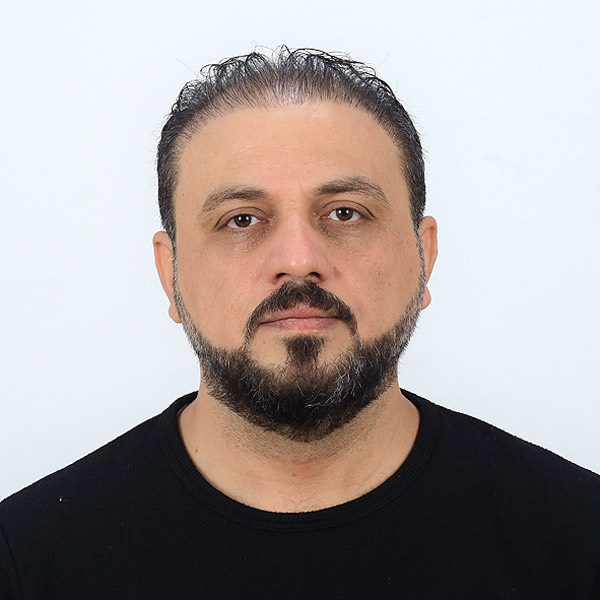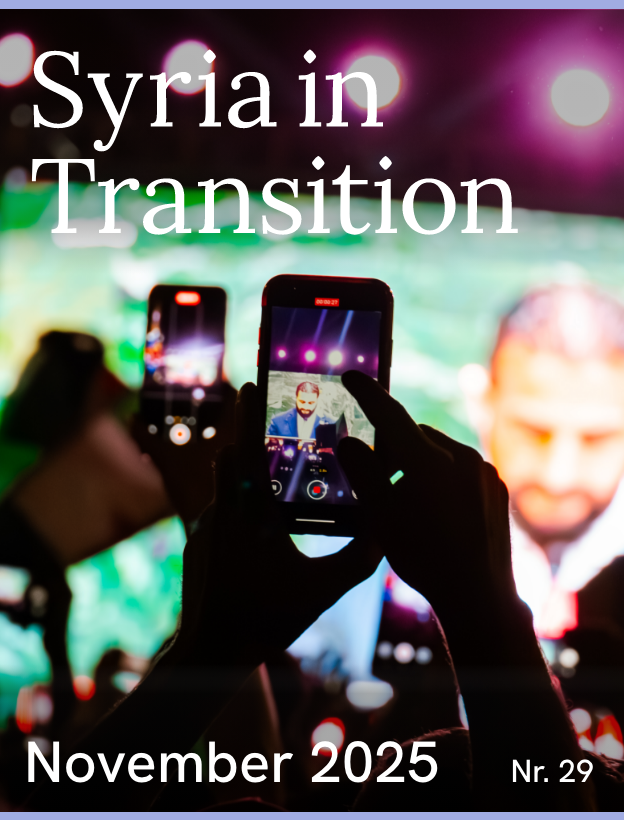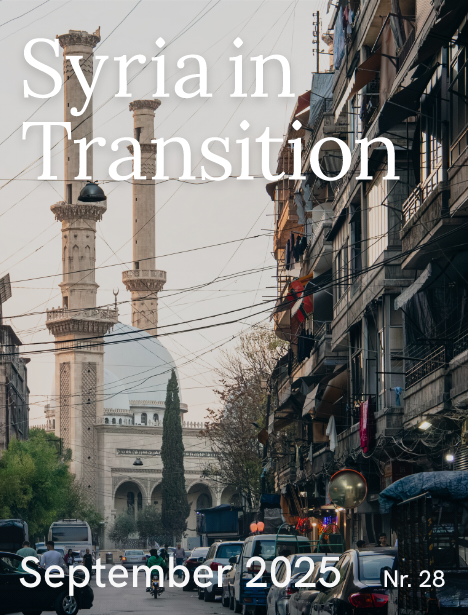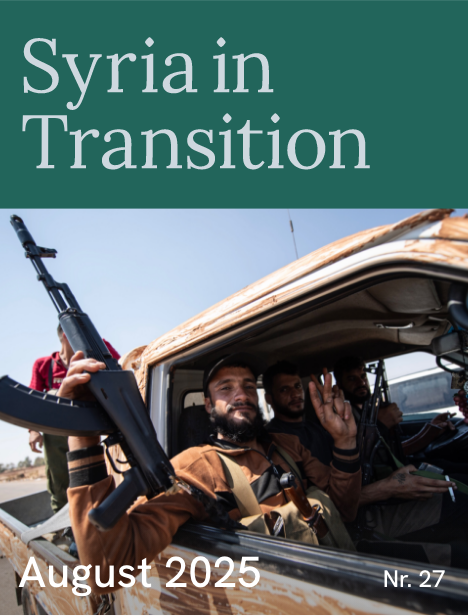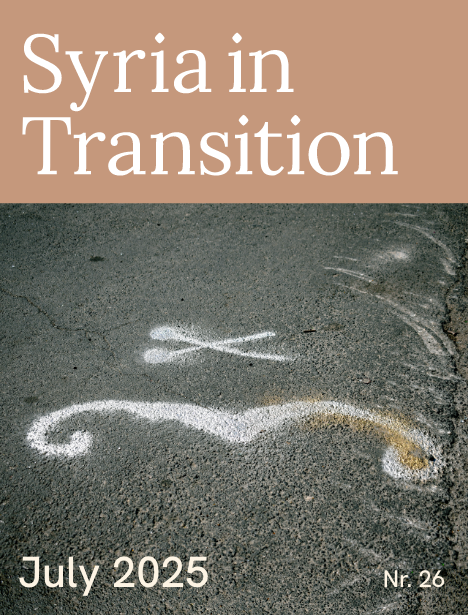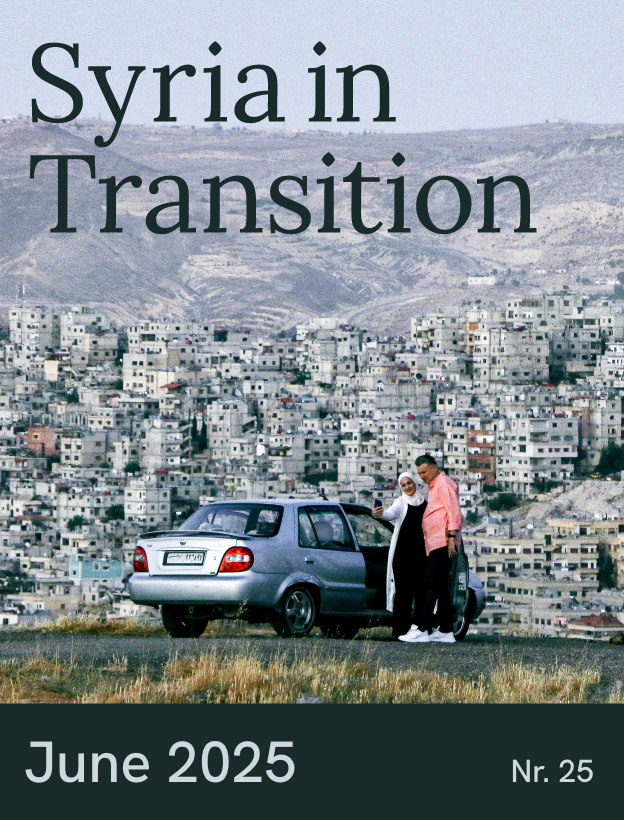The Enforcer: Ahmad al-Sharaa and the Great Powers
6. November 2025
President Ahmad al-Sharaa’s rise to power in Damascus was no mere accident of history. It was rather a culmination of a long, pragmatic reordering of Syria’s power structure and an outcome of a quiet understanding among the key players: the United States, Britain, Russia, Turkey, and Israel. Each, in its own way, came to see Sharaa as the least risky transitional choice after years of exhaustion, and an alternative to both a collapsing regime and a fragmented opposition.
Sharaa’s journey, from a jihadist once linked to al-Qaeda to a local strongman seeking international legitimacy, reflects what has been called the “Syrianisation of jihadism.” This is the transformation of transnational militancy into a controlled, localised project. That transformation provided a rare point of convergence for global powers: Washington and London saw in him a tool for security management without direct intervention; Moscow viewed his organised rule as a safeguard against chaos; and Tel Aviv regarded him as a buffer capable of freezing its northern front and curbing Iranian influence. His ascent, then, was less a domestic upheaval than a product of international consensus: a shared conclusion that Syria needed a disciplined centre of power, even if it was led by someone once branded a terrorist.
Great Power interests
The great powers engaged in Syria are united by one goal: the emergence of an authority that can guarantee security without creating a new vacuum or triggering regional confrontation. In this context, Ahmad al-Sharaa has become a stop-gap figure of convenience. For Washington and London, his leadership serves their three core priorities: counter-terrorism, containment of Iran, and regional stability. He has shown a capacity to control the more unruly factions – foreign fighters among them – turning his northern enclave into a low-cost model of security that keeps refugees in place and maintains a degree of order pending a broader settlement.
Israel, too, perceives him as a useful barrier to Iranian and Hezbollah expansion. His focus on domestic security rather than external jihad, and his avoidance of conflict along the Golan frontier, have introduced the idea of “security coexistence” within Sunni circles. This is a shift that, at least temporarily, offers Israel a quieter northern frontier.
Turkey, meanwhile, views Sharaa as a means of securing its southern flank thus preventing the spread of Kurdish militias, and managing the refugee file. Russia has treated his rise as pragmatic inevitability, allowing Moscow a tactical drawdown from Syria while retaining strategic influence, particularly along the coast. Saudi Arabia, for its part, sees in him a pragmatic Sunni leader able to blunt Iranian power and tackle the lucrative Captagon trade, aligning neatly with Riyadh’s vision of a post-Assad Sunni regional order.
Sharaa has become a rare intersection point for contradictory interests. Yet this consensus is transactional, not strategic. It will likely fray once deeper disagreements between external backers resurface.
In short, Sharaa has become a rare intersection point for contradictory interests and a low-cost, high-control option for a transitional Syria. Yet this consensus is fragile and transactional, not strategic. It will likely fray once deeper disagreements resurface: between Washington and Ankara over the role of the Kurdish-led Syrian Democratic Forces; between Moscow and the West over reconstruction and energy access; between Israel and Turkey over regional security zones; and between Israel and the Arab states over normalisation and regional balance of power.
Sharaa’s strengths and weaknesses
Sharaa’s main strength lies in his blend of security competence and political malleability. This is a combination that makes him tolerable, if not fully trusted, by all sides. He has built a disciplined security apparatus that has brought relative calm to his areas of control, dismantled some of the more extreme militant networks, and projected himself as the man capable of containing radicalism within the Sunni heartlands. His shift away from jihadist rhetoric, and his adoption of a more pragmatic tone, have helped him navigate an increasingly transactional political landscape.
Yet these same strengths mask serious vulnerabilities. His jihadist past constrains his international legitimacy. His rapid transformation from insurgent to statesman invites scepticism as many see it as a calculated survival act rather than genuine reform. Secular and liberal factions, along with ethnic and religious minorities, remain wary of any resurgence of religious authoritarianism under his rule.
Meanwhile, Syria’s economic crisis, widespread poverty and documented human-rights abuses by his security forces erode Sharaa’s credibility. To consolidate his position, Sharaa must open political space, protect rights and freedoms, and work towards a new social contract grounded in inclusion and participation. This is a task easier proclaimed than achieved.
Future scenarios
Sharaa’s role appears to be designed as temporary: a caretaker figure tasked with restoring order and preventing collapse, rather than founding a permanent regime.
In the best-case scenario, he could secure formal legitimacy by decisively severing his links to global jihadism, maintaining counter-terrorism cooperation with Turkey and Israel, protecting minorities, and integrating various Syrian constituencies – especially within the military and security sectors – into a more inclusive governance framework.
The best that he can do is to stop the country from sliding back into the abyss.
The more probable interim scenario envisions him as a two- or three-year transitional figure: dismantling extremist factions, stabilising borders, and paving the way for cautious normalisation with Israel before handing power to a broader transitional government or a joint military-civilian ruling council.
But the third scenario – failure – remains most likely. Failure to reign in extremists, alienation of minorities, economic deterioration, and renewed violence in places like the coast and Suwayda, could push Syria back into open warfare and chaos. This would revive the familiar pattern: a fractured Syria divided into zones of influence managed by the United States, Turkey, Russia and Israel, each securing its piece of the wreckage.
Ahmad al-Sharaa, then, is not the author of Syria’s next chapter so much as its caretaker. He is a man defined by his own contradictions, holding together a fragile equilibrium shaped by exhaustion. The best that he can do is to stop the country from sliding back into the abyss.
